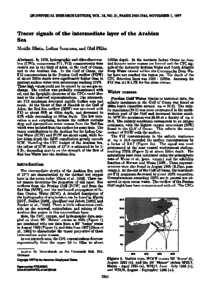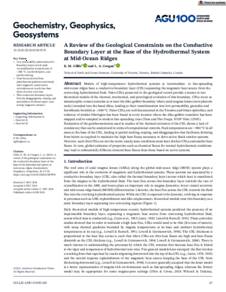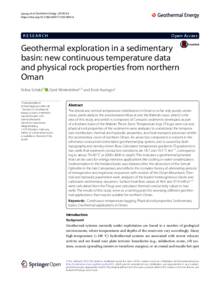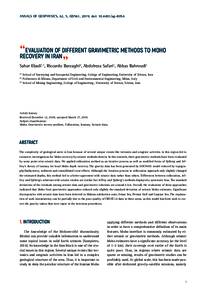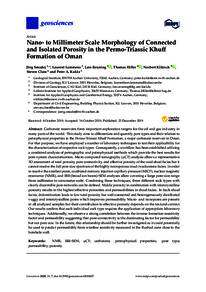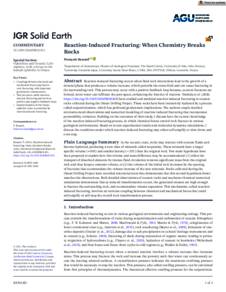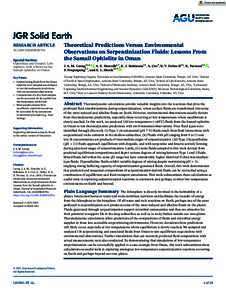Document
Tracer signals of the intermediate layer of the Arabian Sea.
Identifier
DOI: 10.1029/97GL01041
Source
Geophysical Research Letters. v. 24, 21, 97GL01041, p. 2561-2564
Contributors
Stramma, Lothar. , Author
Plähn, Old. , Author
Country
United States.
City
Washington
Publisher
American Geophysical Union.
Gregorian
1997-11-01
Language
English
English abstract
In 1995, hydrographic and chlorofluorocarbon (CFCs, components F11, F12) measurements were carried out in the Gulf of Aden, in the Gulf of Oman, and in the Arabian Sea. In the Gulf of Oman, the F12 concentrations in the Persian Gulf outflow (PGW) at about 300m depth were significantly higher than in ambient surface water with saturations reaching 270%. These high values could not be caused by air-sea gas exchange. The outflow was probably contaminated with oil, and the lipophilic character of the CFCs could then lead to the observed supersaturations. The intermediate F12 maximum decreased rapidly further east and south. At the Strait of Bab el Mandeb in the Gulf of Aden, the Red Sea outflow (RSW) was saturated with F12 to about 65% at 400m depth, and decreased to 50% while descending to 800m depth. The low saturation is not surprising, because the outflow contains deep and intermediate water masses from the Red Sea which were isolated from the surface for some time. The tracer contributions to the Arabian Sea for Indian Central Water (ICW) and PGW are about equal, while below 500m depth the RSW contribution greatly exceeds ICW. Modeling the CFC budget of the Arabian Sea, the inflow of ICW north of 12°N is estimated to be 1-6 Sv, depending mainly on the strength of the flow of Red Sea Water into the Arabian Sea.
ISSN
0094-8276
Category
Journal articles

